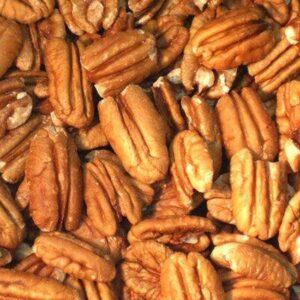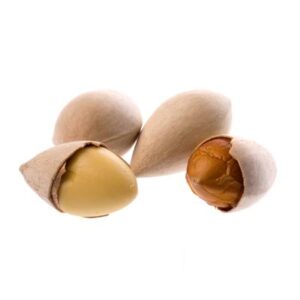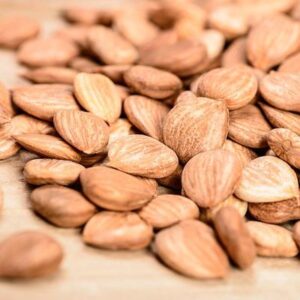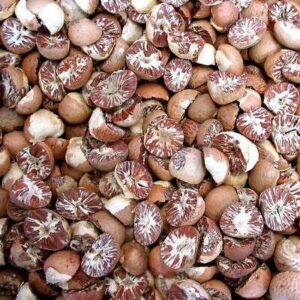Description
Palm kernel nuts
Palm kernel nuts come from the oil palm tree (Elaeis guineensis), native to West Africa but now widely grown in tropical regions (Malaysia, Indonesia, Nigeria, etc.).
- The fruit of the oil palm has two oil-rich parts:
- Palm oil – extracted from the fleshy pulp (orange-red mesocarp).
- Palm kernel oil – extracted from the seed/inner nut (the kernel inside the shell).
The palm kernel nut is that inner seed, surrounded by a hard shell, found inside the fruit.
Uses of Palm Kernel Nuts
- Palm Kernel Oil (PKO)
- High in saturated fats (lauric acid, myristic acid).
- Used in cooking oils, margarines, confectionery, ice cream, and baked goods.
- Industrial use: soaps, detergents, cosmetics, biodiesel.
- Palm Kernel Cake/Meal (byproduct)
- After oil extraction, the leftover press cake is rich in protein and fiber.
- Widely used as livestock feed (especially for cattle, sheep, goats, and poultry).
- Shells
- Used as fuel, in activated charcoal production, or as a filler in road construction.
Nutrition & Health
- Palm kernel oil:
- High in calories and saturated fats → provides energy but should be consumed in moderation.
- Unlike palm oil, PKO is solid at room temperature and similar in profile to coconut oil.
- Palm kernel cake: valuable as animal feed but not commonly eaten by humans.







Reviews
There are no reviews yet.